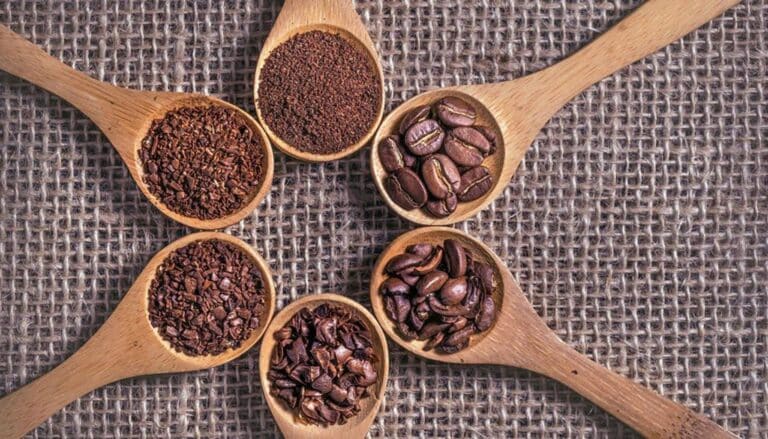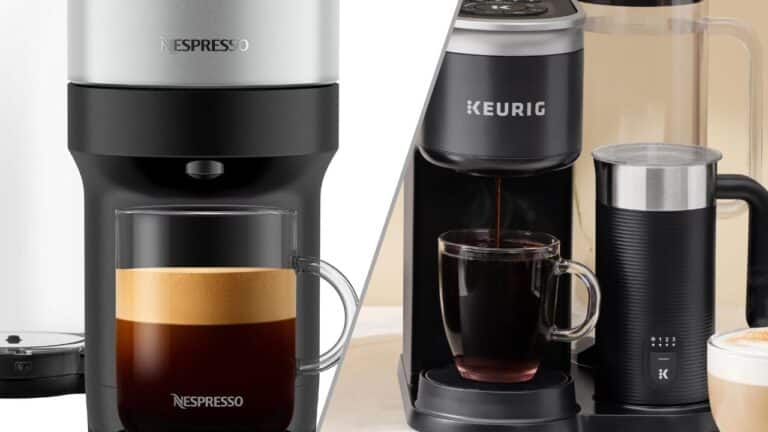Coffee isn’t just a beverage; it’s a ritual, a comfort, a community builder, and for many, an absolute morning necessity. Its rich aroma and diverse flavors have captivated people worldwide, making it one of the most beloved drinks. But what makes a good cup of coffee? It’s not just about the beans – though they play a crucial role. The true essence of coffee comes from the art of its preparation, a symphony of processes that transform simple beans into a soul-stirring cup.
The beauty of coffee lies in its versatility. From the robust espresso shots in a bustling Italian café to a gently brewed pour-over on a quiet morning, the ways to prepare and enjoy coffee are as varied as its drinkers. Each method brings out different notes and textures, making every cup a unique experience. Whether it’s the boldness you seek or a subtle, nuanced flavor, there’s a coffee preparation method tailored to your taste.
Moreover, personal preferences play a pivotal role in defining what a ‘better cup’ means. For some, it’s the strength and richness of an espresso, while for others, it’s the smoothness and clarity of filter coffee. These preferences drive the endless exploration and experimentation in the world of coffee, leading to innovative brewing techniques, blends, and flavors.
In this article, we delve into 12 coffee hacks that cater to a wide range of tastes and preferences. These tips and tricks aim to enhance your coffee experience, whether you’re a seasoned aficionado or a curious newcomer. So, let’s embark on this journey to discover how a few simple tweaks can elevate your daily cup of coffee from ordinary to extraordinary.
12 Coffee Hacks You Need to Know for a Better Cup
1. Perfect Your Water-to-Coffee Ratio
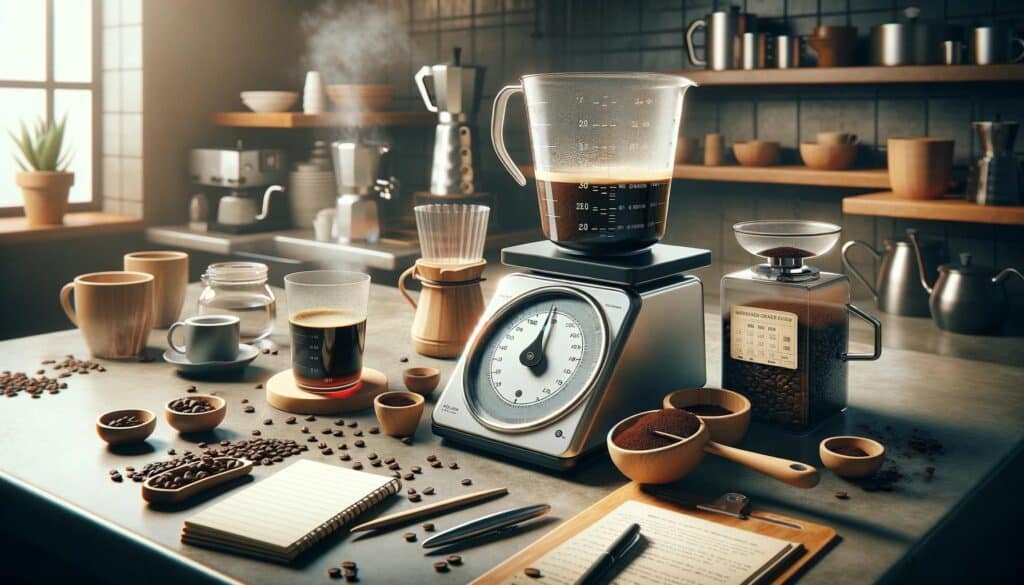
The foundation of a great cup of coffee lies in the balance between water and coffee grounds. This ratio is crucial because it determines the strength and flavor of your brew. Too much water and your coffee will be weak and underwhelming; too little, and it might be overpoweringly strong and bitter.
Importance of Measuring Your Coffee and Water
- Consistency: Measuring ensures you get a consistent taste every time you brew. Coffee lovers know that even small variations can alter the flavor profile significantly.
- Strength Control: By adjusting the ratio, you can control how strong or mild your coffee is. This is especially important if you’re experimenting with new beans or brewing methods.
- Economical: Accurate measurement means you use just the right amount of coffee, preventing waste and saving money in the long run.
Tips for Finding the Right Balance for Your Taste
- Start with a Standard Ratio: A good starting point is the “Golden Ratio” recommended by many baristas – about 1 to 2 tablespoons of coffee for every 6 ounces of water. This can be adjusted based on your preference.
- Use a Scale: For more precision, use a scale to measure your coffee in grams. This is particularly useful for methods like pour-over or French press, where consistency is key.
- Adjust Gradually: Make small adjustments. If your coffee is too weak, add more coffee; if it’s too strong, increase the water. Remember, taste changes can be subtle.
- Consider the Coffee Type: Different types of coffee may require different ratios. Light roasts often benefit from a slightly higher coffee-to-water ratio than darker roasts due to their density.
- Record Your Experiments: Keep a coffee journal. Note down the ratios and brewing methods you’ve tried along with your impressions. This will help you recreate or tweak your perfect cup next time.
- Mind the Grind: The grind size of your coffee also affects extraction. A finer grind will extract more quickly than a coarser one, so consider this when adjusting your ratios.
By understanding and playing with the water-to-coffee ratio, you can significantly enhance the quality of your coffee, tailoring each cup to your individual taste. Remember, the perfect cup is a personal journey – what matters most is how it tastes to you.
2. Choose Quality Beans
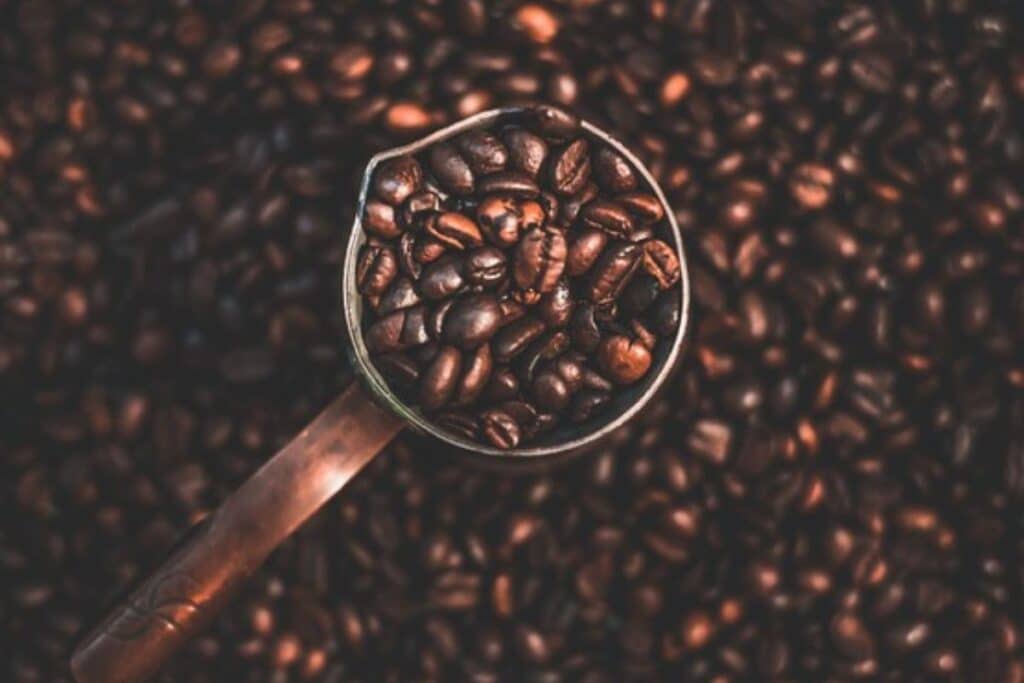
Selecting the right coffee beans is as crucial as any brewing technique. The quality of the beans not only influences the flavor profile of your coffee but also determines the richness and depth of your brew. High-quality beans can transform an average cup into a remarkable coffee experience.
The Difference Bean Quality Makes
- Flavor Complexity: Superior quality beans are often characterized by a more complex and nuanced flavor profile, offering a range of tasting notes from fruity and floral to nutty and chocolaty.
- Freshness: Quality beans are typically fresher. Fresh beans have a more vibrant and robust flavor compared to stale beans, which tend to taste flat and lifeless.
- Origin Characteristics: High-quality beans are sourced from specific regions known for their coffee production. Each region imparts unique characteristics to its beans, influenced by factors like altitude, climate, and soil.
How to Select the Best Beans
- Look for Freshness Indicators: Purchase beans that have a “roasted on” date rather than a “best by” date. The closer to the roasting date, the fresher the beans.
- Choose Whole Beans: Whole beans maintain their flavor longer than ground coffee. Grinding beans just before brewing ensures maximum freshness and flavor.
- Understand Roast Types: Beans come in various roasts from light to dark. Light roasts retain more of the bean‘s original flavor, while darker roasts have a stronger, more robust taste. Choose according to your flavor preference.
- Single-Origin vs. Blends: Single-origin beans come from one location and offer distinct flavors. Blends combine beans from various locations, offering a balanced and consistent taste.
- Check the Source: Look for beans that are ethically sourced. Many specialty coffee roasters provide information about where their beans are from and how they are grown.
- Experiment: Don’t hesitate to try beans from different regions and roasters. Each variety has its unique taste, and experimenting can help you find your favorite.
- Ask for Recommendations: If you’re buying from a local coffee shop or roaster, don’t hesitate to ask for recommendations. They can provide valuable insight into the most popular or freshest beans.
Remember, the best coffee beans are the ones that suit your taste preference. Don’t be afraid to experiment with different varieties and roasts to discover what you enjoy the most.
3. Store Beans Properly
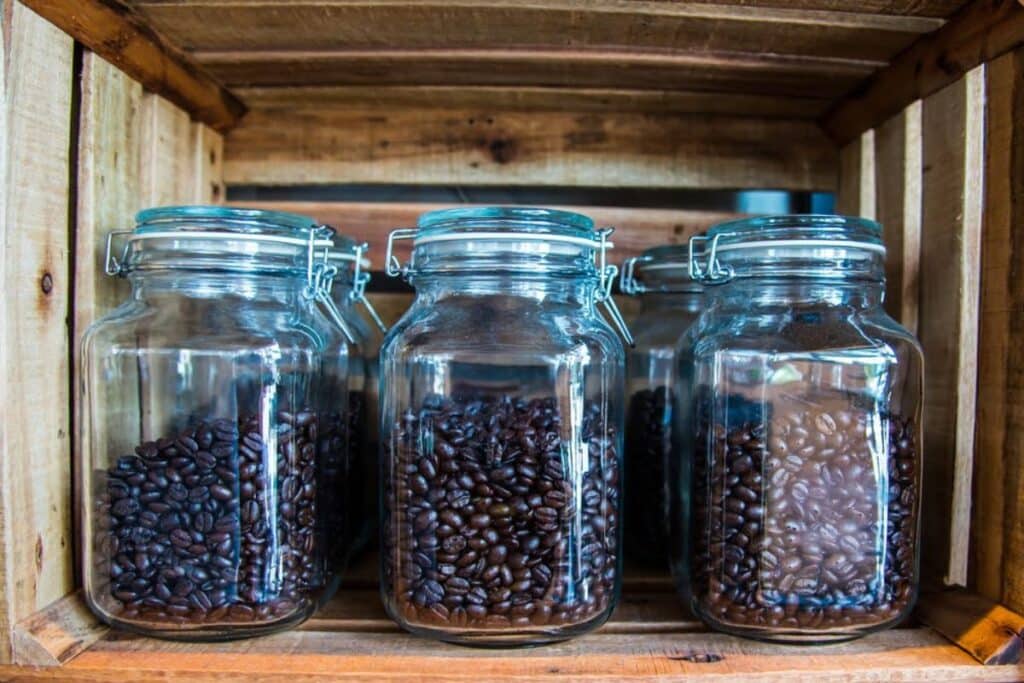
Once you’ve selected high-quality coffee beans, proper storage is key to maintaining their freshness and flavor. Coffee beans are sensitive to air, moisture, heat, and light, and improper storage can lead to stale, flavorless coffee. Here’s how to keep your beans in peak condition.
Best Storage Practices to Maintain Freshness
- Airtight Containers: Store your beans in an airtight container. Oxygen is one of the main culprits that can stale coffee, so limiting air exposure is crucial.
- Cool, Dark Place: Keep the container in a cool, dark place, away from direct sunlight and heat sources. Exposure to light and heat can degrade the quality of the beans.
- Avoid Moisture: Keep the beans in a dry place. Moisture can ruin the flavor of coffee and promote the growth of mold and mildew.
- Limit Air Exposure: Each time you open the container, air gets in. Try to open your coffee storage only when necessary, and consider transferring a week’s worth of beans to a smaller container for daily use.
- Room Temperature is Best: While it might be tempting to store coffee in the fridge or freezer, this can lead to moisture condensation on the beans. Room temperature storage is generally best for maintaining flavor.
Common Storage Mistakes
- Using Transparent Containers: Clear containers might look nice, but they allow light to reach the beans, which can affect their quality. If you must use a clear container, store it in a cupboard.
- Improper Sealing: Containers that aren’t sealed properly allow air to enter and stale the beans. Ensure your container has a tight-fitting lid.
- Storing Coffee in the Bag It Came In: Many coffee bags aren’t designed for long-term storage. Transferring beans to an airtight container is a better option.
- Storing Near Heat or Moisture Sources: Avoid storing your coffee near the stove, oven, or in areas where it might be exposed to steam or condensation, like near a dishwasher.
- Freezing Beans for Short-Term Use: Freezing can preserve beans for long-term storage (several months), but it’s not ideal for daily or weekly use. The thawing process can lead to flavor loss.
Proper storage of your coffee beans is a simple yet effective way to ensure every cup you brew is as delicious as possible. By following these guidelines, you can enjoy fresh, flavorful coffee every time.
4. Grind Your Own Beans

Grinding your own coffee beans just before brewing is a game-changer in the pursuit of the perfect cup. It’s one of the easiest ways to significantly upgrade the quality of your coffee.
Benefits of Grinding Beans Just Before Brewing
- Freshness: Once coffee is ground, it starts to oxidize and lose its flavors and aromas. Grinding beans right before brewing ensures maximum freshness and taste.
- Control Over Grind Size: Different brewing methods require different grind sizes for optimal extraction. Grinding your own beans allows you to customize the grind size to match your brewing method, be it a fine grind for espresso or a coarser grind for a French press.
- Improved Flavor Profile: Freshly ground beans can enhance the coffee’s flavor profile, bringing out subtle notes and characteristics that pre-ground coffee often lacks.
- Aroma Experience: Grinding beans releases their oils and aromas, contributing to an enhanced sensory experience even before you take the first sip.
Tips on Choosing a Grinder
- Burr vs. Blade Grinders: Burr grinders are generally preferred over blade grinders. They grind coffee more uniformly, which is crucial for flavor extraction. Blade grinders chop beans inconsistently, leading to uneven extraction.
- Adjustable Settings: Look for a grinder with adjustable settings. This allows you to switch between fine and coarse grinds depending on your brewing method.
- Manual vs. Electric Grinders: Manual grinders are affordable, portable, and often quieter. They’re great for small quantities and have a satisfying hands-on feel. Electric grinders are faster and more convenient, especially for larger quantities or daily use.
- Capacity: Consider the amount of coffee you typically make. Choose a grinder with a capacity that matches your daily needs to avoid grinding in batches.
- Durability and Quality: Invest in a grinder that’s well-made. Higher-quality grinders can provide a more consistent grind and tend to last longer.
- Ease of Cleaning: Regular cleaning is crucial for maintaining grinder performance and coffee flavor. Look for a grinder that’s easy to dismantle and clean.
- Price: Grinders vary widely in price. While higher-priced models usually offer better quality and durability, there are also good-quality affordable options available.
Remember, the right grinder can transform your coffee experience, making it worth the investment. By grinding your own beans, you take an important step towards a fresher, more flavorful cup of coffee.
5. Experiment with Different Brewing Methods
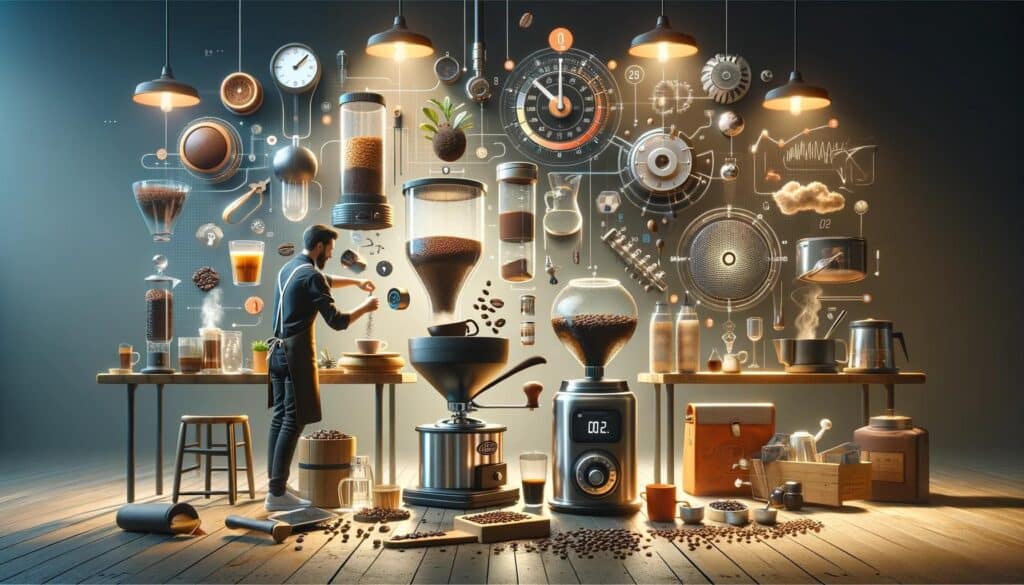
Exploring various coffee brewing methods is a journey into the diversity of flavors and textures that coffee can offer. Each method brings out different aspects of the beans, and experimenting with them can be a delightful way to find your personal favorite.
Overview of Popular Brewing Methods
- French Press: Known for its rich and full-bodied flavor, the French press is a straightforward immersion brewing method. It allows the coffee grounds to steep directly in hot water, extracting deep flavors. The metal filter allows more oils and fine particles into the cup, contributing to a thicker mouthfeel.
- Drip Coffee (Pour-Over and Automatic Drip): Drip brewing, whether manual pour-over or automatic, is known for its clarity and precision in flavor. It involves hot water passing through the coffee grounds, extracting flavors as it drips into the cup or pot. This method highlights the coffee’s acidity and nuanced flavors, producing a cleaner, lighter cup compared to immersion methods.
- Espresso: Espresso is a concentrated coffee brewed by forcing a small amount of nearly boiling water under pressure through finely-ground coffee beans. It’s the base for many coffee shop favorites like lattes and cappuccinos. Espresso has a robust flavor, rich aroma, and a creamy layer on top called crema.
- Aeropress: The Aeropress is a versatile and portable brewing device that combines immersion and pressure. It can produce a variety of strengths, from espresso-like concentrates to lighter, drip-style coffee. It’s known for its quick brewing time, ease of use, and clean, smooth cup.
- Cold Brew: Cold brew coffee is made by steeping coarsely ground beans in cold water for an extended period, usually 12-24 hours. The result is a coffee concentrate that is less acidic and bitter than hot-brewed coffee. It’s known for its smooth, sweet flavor and can be served diluted with water or milk.
How Different Methods Affect Flavor
- Extraction Time and Temperature: Longer extraction times and higher temperatures typically extract more flavors and caffeine. Methods like the French press have longer steep times, leading to a richer cup, while quick methods like espresso result in a strong but less complex flavor.
- Filter Type: The type of filter used can significantly impact flavor. Paper filters, common in drip systems, absorb oils and small particles, resulting in a cleaner cup. Metal filters, like in the French press, allow more oils and fine particles through, enhancing body and richness.
- Pressure: Methods involving pressure, like espresso, extract different flavor compounds compared to gravity-fed methods like drip coffee. Pressure can create a more intense and concentrated flavor.
Experimenting with these methods not only broadens your coffee horizons but also deepens your appreciation for the diversity of flavors that coffee beans can produce. Each method has its unique charm, and you might find your preference changes depending on your mood, the time of day, or the type of bean you’re using.
6. Control Water Temperature

The temperature of the water used to brew coffee is a critical factor that can greatly influence the taste and quality of your brew. Too hot, and you risk over-extraction; too cool, and under-extraction. Here’s how to manage water temperature for the ideal cup.
Ideal Temperature Ranges for Brewing
- General Range: The ideal water temperature for brewing most coffee is between 195°F to 205°F (90°C to 96°C). This range is hot enough to extract properly but not so hot as to cause over-extraction.
- Light Roasts: Lighter roasts, with their denser beans, may benefit from the higher end of the temperature spectrum to properly extract their complex flavors.
- Dark Roasts: Darker roasts, being less dense, can often be brewed at slightly lower temperatures to avoid burning the beans, which can result in a bitter taste.
- Cold Brew: Cold brew coffee, as the name suggests, uses cold water, typically steeped for 12 to 24 hours.
How to Maintain Consistent Temperature
- Use a Kettle with Temperature Control: The easiest way to manage water temperature is to use an electric kettle with a built-in thermostat. These kettles allow you to set and maintain a specific temperature.
- Thermometer for Manual Kettles: If you don’t have a temperature-controlled kettle, use a kitchen thermometer to check the water temperature before pouring.
- Preheat Your Brewing Equipment: Pouring hot water into a cold brewer can decrease the water temperature significantly. Preheating your French press, pour-over cone, or espresso machine ensures that the brewing environment remains consistent.
- Avoid Reboiled Water: Reboiling water can deplete the oxygen levels, which can affect the taste of the coffee. Always use fresh water.
- Cool Down Boiled Water: If you’ve boiled water and don’t have a thermometer, let it sit for about 30 seconds to a minute. This usually brings it into the ideal brewing range.
- Consistency is Key: Try to be consistent with the water temperature each time you brew. Small changes can lead to significant differences in taste.
Controlling the water temperature is not just about hitting the right numbers; it’s about finding what works best for your preferred brewing method and coffee type. By paying attention to the temperature, you can enhance extraction and enjoy a more flavorful and balanced cup of coffee.
7. Pre-infuse Your Grounds
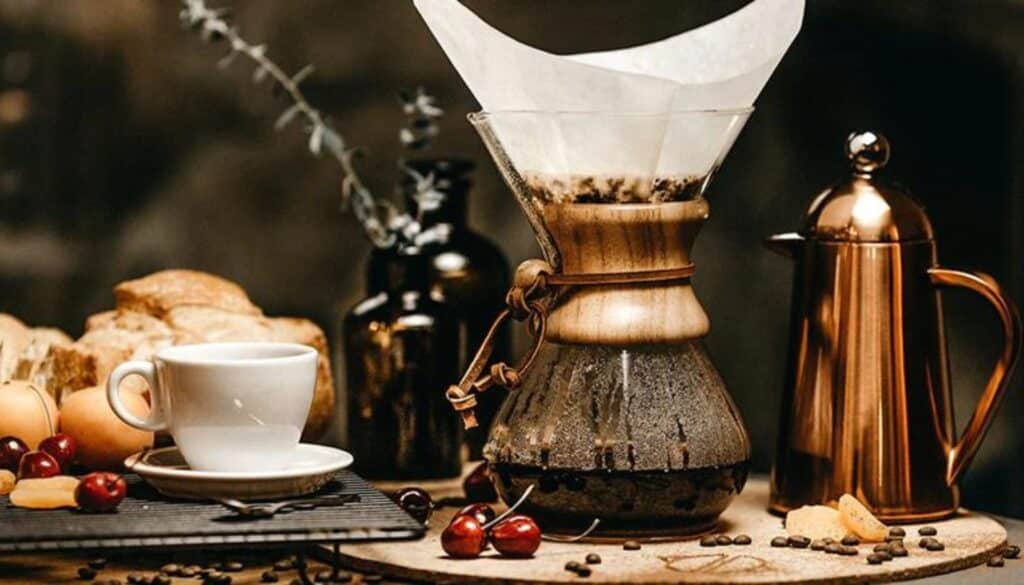
Pre-infusion, often overlooked, is a simple yet effective step in the brewing process that can significantly enhance the taste of your coffee. It involves initially wetting the coffee grounds with a small amount of water before the full brew. This technique is particularly beneficial for methods like pour-over, espresso, and drip coffee.
What is Pre-infusion and Why It Matters
- Definition: Pre-infusion is the process of gently soaking the coffee grounds with hot water before the main extraction. This step usually lasts for about 30 seconds.
- Purpose: The goal of pre-infusion is to allow the coffee grounds to “bloom.” When hot water first hits the coffee, it releases carbon dioxide and other gases trapped in the beans, a process known as degassing.
- Benefits:
- Even Extraction: Pre-infusion helps to evenly saturate the grounds, leading to a more uniform extraction.
- Flavor Enhancement: By allowing the coffee to bloom, it can release more flavor, resulting in a cup that’s richer and more complex.
- Prevents Channeling: In espresso, pre-infusion prevents channeling, where water finds the path of least resistance, leading to uneven extraction.
Step-by-Step Guide to Pre-infusing
- Heat Your Water: Bring your water to the appropriate brewing temperature.
- Prepare Your Coffee Maker: Set up your coffee maker, whether it’s a pour-over, drip machine, or espresso machine.
- Add Coffee Grounds: Place your coffee grounds in the filter.
- Initial Pour: Gently pour enough water to wet all the grounds. This amount is typically about twice the weight of the coffee. For example, for 20 grams of coffee, use about 40 grams of water.
- Wait and Observe: After pouring, let the coffee sit for about 30 seconds. You’ll notice the coffee grounds swell and bubble, known as the bloom. This is the degassing process.
- Continue Brewing: After the bloom phase, continue with your regular brewing process.
For espresso machines with a pre-infusion feature, the process is automated. Just ensure that your machine is set up for it.
Pre-infusion is a small step that can make a significant difference in your coffee. It’s about giving your coffee a moment to prepare itself for the full extraction, leading to a more balanced and flavorful cup.
8. Use Filtered Water
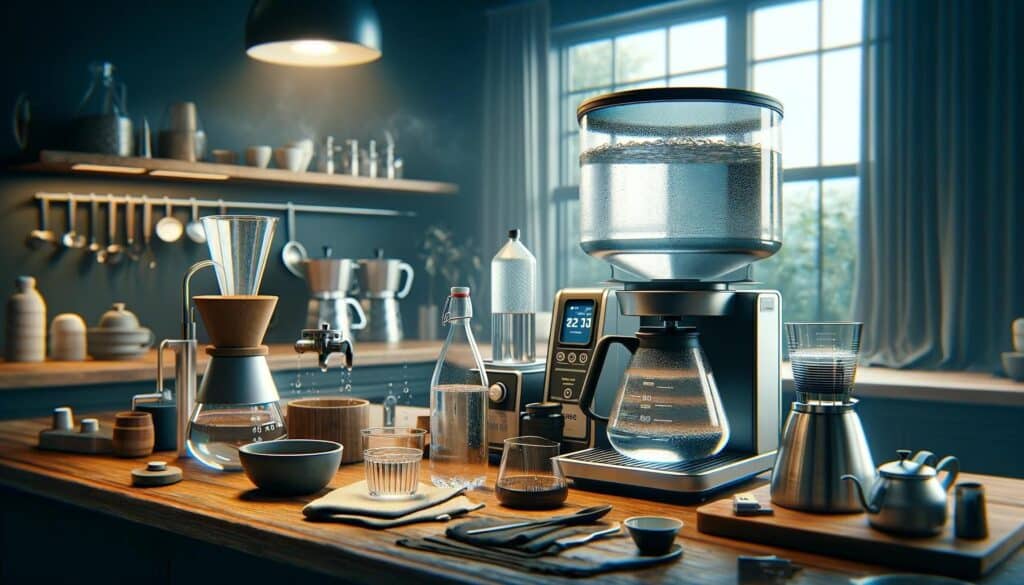
Water quality plays a critical role in coffee brewing, often overlooked. Since coffee is about 98% water, the water you use can significantly impact the taste of your final brew. Understanding the importance of water quality and selecting the right type of water can elevate your coffee experience.
The Impact of Water Quality on Coffee Taste
- Taste and Flavor Extraction: Water that contains too many minerals or impurities can affect the extraction process, leading to a flat or off-tasting coffee. Conversely, water that is too pure can also lead to under-extraction, resulting in a weak and lifeless brew.
- pH Level: The pH level of water can affect the acidity of your coffee. Ideally, water should be neutral (around pH 7) for balanced coffee.
- Mineral Content: Minerals like magnesium and calcium can help extract flavorful compounds from coffee grounds. However, excessive mineral content (hard water) can lead to scaling in your equipment and an overly mineral taste.
How to Choose the Right Water
- Use Filtered Water: Filtered water can remove impurities and chlorine tastes while maintaining essential minerals. It’s a simple and effective way to improve your coffee.
- Avoid Distilled or Softened Water: Distilled water, lacking in minerals, can produce a flat-tasting coffee. Similarly, water softened with salt can negatively impact the taste and harm your coffee machine.
- Consider Bottled Water: If your tap water isn’t ideal, bottled water can be a good alternative. Look for bottled water labeled as “spring” or “artesian” which typically have a balanced mineral content.
- Test Your Tap Water: Testing your tap water for hardness, pH, and mineral content can give you a good idea of its suitability for coffee brewing. Home water testing kits are readily available.
- Regularly Clean Your Coffee Maker: Regardless of the water quality, always ensure your coffee maker is clean as built-up residue can also affect the taste of your coffee.
- Experiment: Like other aspects of coffee brewing, experiment with different types of water to find what works best for your taste preference and brewing method.
By paying attention to the water you use, you can significantly influence the taste and quality of your coffee. Good water doesn’t just make better coffee; it makes every sip more enjoyable.
9. Clean Your Coffee Maker Regularly
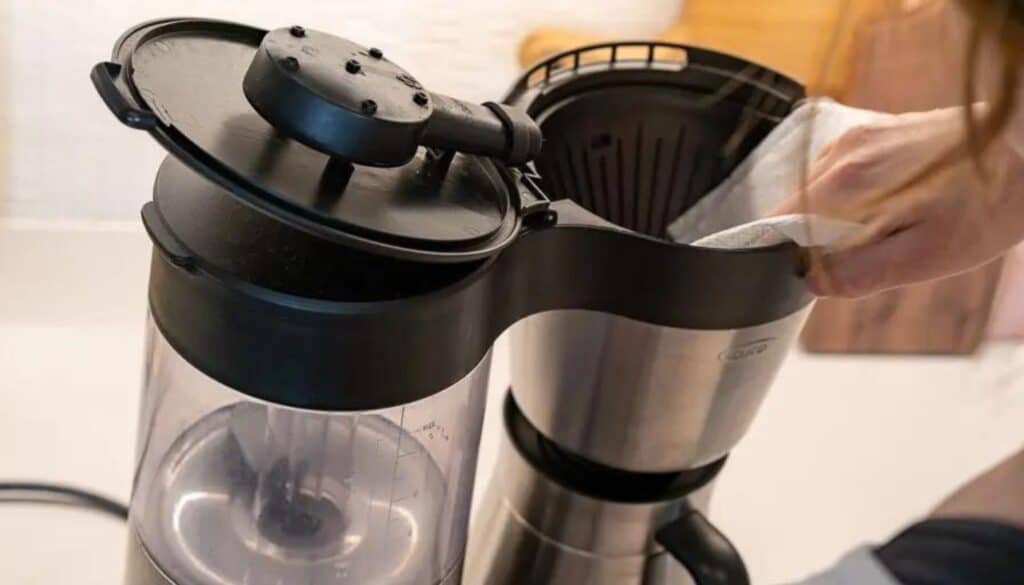
Maintaining cleanliness in your coffee maker is not just about hygiene; it’s about ensuring the best possible taste of your coffee. Coffee oils, grounds, and mineral deposits can build up over time, affecting the flavor and function of your machine.
The Importance of Cleanliness in Coffee Making
- Flavor Preservation: Residue from old coffee oils and grounds can impart bitter and stale flavors to your brew.
- Machine Efficiency: Regular cleaning ensures your coffee maker operates efficiently. Build-up can clog and slow down your machine, potentially leading to malfunctions.
- Mold and Bacteria Prevention: Coffee makers can be breeding grounds for mold and bacteria if not cleaned regularly. This not only affects the taste but can also pose health risks.
Tips for Effective Cleaning Routines
- Daily Cleaning:
- Drip Coffee Makers: After each use, remove and clean the pot, filter basket, and any removable parts with warm, soapy water.
- Espresso Machines: Wipe down the machine exterior, clean the portafilter, and run a water cycle through the machine without coffee after your last brew.
- French Press/Other Manual Brewers: Disassemble and clean all parts with warm, soapy water after each use.
- Weekly Cleaning:
- Deep Cleaning Removable Parts: Soak removable parts like carafes, filter baskets, and portafilters in a mixture of warm water and vinegar or a specialized coffee equipment cleaner.
- Wiping and Brushing: Use a damp cloth to wipe down the exterior of the machine and a brush or pin to clear out any coffee grounds stuck in the machine’s nooks and crannies.
- Monthly Cleaning:
- Descaling: Over time, mineral deposits (scale) from water can build up in your coffee maker, affecting its performance. Descaling involves running a mixture of water and descaling solution or white vinegar through your machine to remove these deposits. The frequency of descaling depends on the hardness of your water and how often you use your coffee maker.
- Use the Right Cleaning Agents: Avoid using harsh or abrasive cleaners that could damage your coffee maker. There are many coffee-specific cleaning agents that are effective and safe.
- Follow Manufacturer’s Instructions: Always refer to your coffee maker’s manual for specific cleaning instructions, as different machines have different requirements.
Remember, a clean coffee maker is essential for brewing a great-tasting cup of coffee. Regular cleaning not only prolongs the life of your coffee maker but also ensures that each cup you brew is as delicious as possible.
10. Play with Sweeteners and Creamers
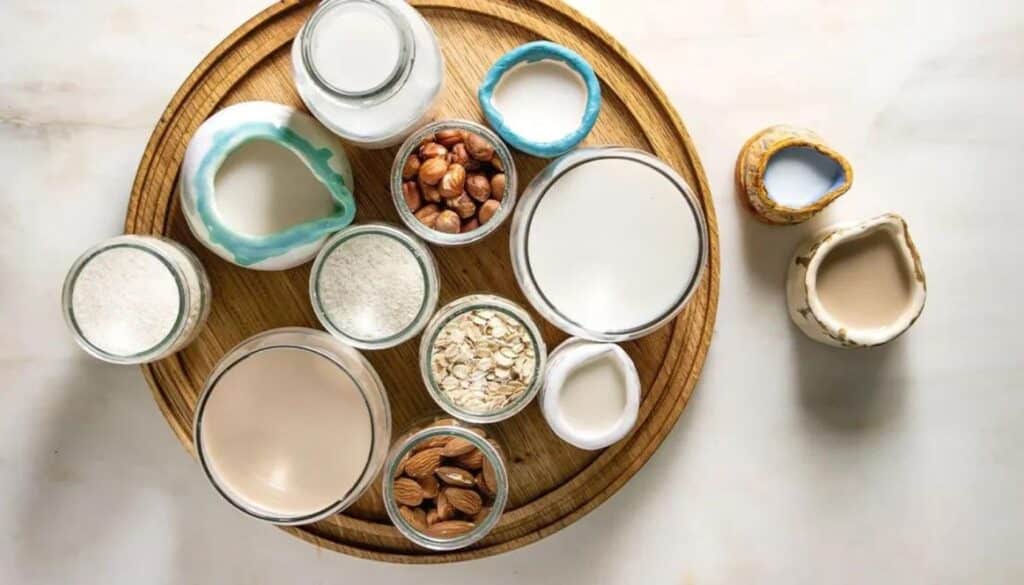
While coffee purists might prefer their brew black, the addition of sweeteners and creamers can transform your coffee into a rich and diverse sensory experience. Exploring different sweeteners and creamers can cater to your personal taste and dietary needs, adding a new dimension to your daily cup.
Exploring Alternative Sweeteners and Creamers
- Alternative Sweeteners:
- Natural Sweeteners: Options like honey, maple syrup, or agave nectar can add unique flavors while sweetening your coffee.
- Sugar Substitutes: For those watching their sugar intake, artificial sweeteners or natural sugar alternatives like stevia or monk fruit can be excellent choices.
- Spices: Incorporating spices like cinnamon, nutmeg, or cardamom directly into your grounds before brewing can add a subtle sweetness and spice without added sugar.
- Alternative Creamers:
- Dairy Alternatives: Non-dairy milks such as almond, soy, oat, or coconut milk offer distinct flavors and are great for those with dietary restrictions or lactose intolerance.
- Flavored Creamers: Available in a wide variety of flavors, these can add an interesting twist to your coffee. Be mindful of sugar and artificial flavorings in commercial creamers.
- Butter and Coconut Oil: Used in “bulletproof” coffee, these fats can add richness and may offer sustained energy, especially for those on a ketogenic diet.
How Different Additives Change the Coffee Experience
- Flavor Profile: Different sweeteners and creamers can enhance or alter the inherent flavors of the coffee. For instance, vanilla-flavored creamer can add a dessert-like quality, while a dash of cinnamon might accentuate the coffee’s natural spiciness.
- Texture and Mouthfeel: Creamers, especially those with fat content, can change the texture of your coffee, making it creamier and richer.
- Nutritional Content: It’s important to consider the nutritional aspect of additives, especially if you’re monitoring your calorie, sugar, or fat intake. Some sweeteners and creamers can significantly increase the calorie count of your coffee.
- Personalization: Experimenting with different additives allows you to tailor your coffee to your exact liking, making your coffee experience more personal and enjoyable.
By experimenting with various sweeteners and creamers, you can create a coffee experience that’s uniquely yours. Whether you’re looking for a healthier alternative, a new flavor, or just a change from your usual routine, the possibilities are nearly endless.
11. Master the Art of Milk Frothing
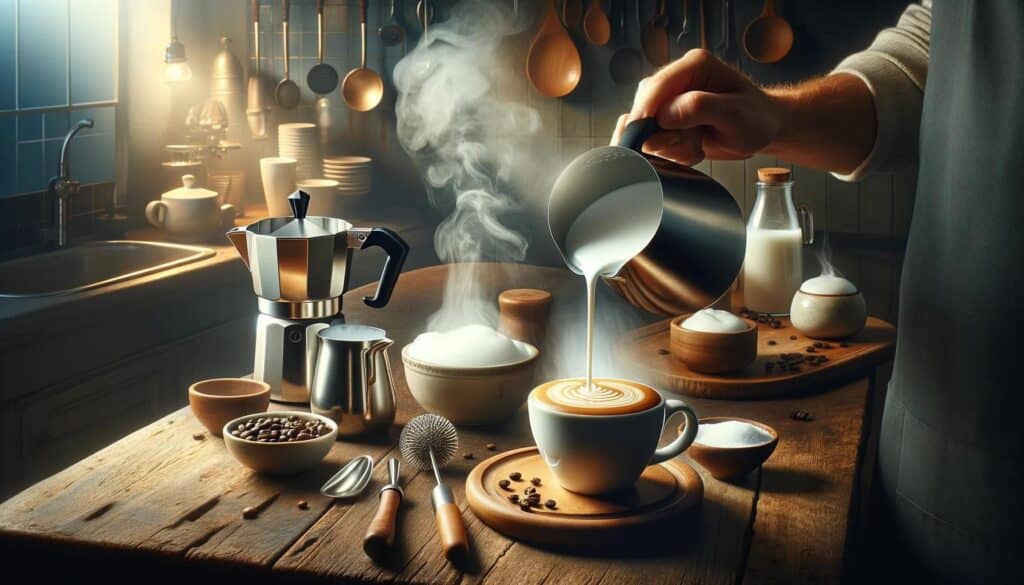
Milk frothing is an essential skill for crafting café-quality espresso drinks at home. Perfectly frothed milk is not just about achieving the right texture; it’s about enhancing the overall taste and experience of your coffee. With the right techniques and tools, you can create rich, creamy froth for your lattes and cappuccinos.
Techniques for Perfect Milk Frothing at Home
- Choosing the Right Milk: Whole milk froths best due to its fat content, but lower-fat and non-dairy milks can also be used. Each type of milk will produce slightly different results in texture and taste.
- Temperature Matters: Ideally, milk should be frothed to about 150°F to 155°F. Overheating can result in a burnt taste and can destroy the proteins responsible for froth.
- Proper Aeration: Introduce air (aeration) at the beginning of the frothing process. For the first few seconds, keep the tip of the frother just below the surface to create microfoam. Then, submerge it to heat the milk.
- Creating Microfoam: The goal is to create fine, velvety microfoam, not large bubbles. Consistent hand movement and the right angle are key. Gently swirl the milk to evenly distribute the heat.
- Practice and Patience: Like any skill, achieving perfect froth takes practice. The more you do it, the better you’ll understand the nuances of your tools and milk choice.
Different Tools You Can Use
- Steam Wand (Espresso Machine): The steam wand on an espresso machine is the most professional tool for frothing milk. It can simultaneously heat and aerate the milk, creating a smooth and consistent microfoam.
- Electric Milk Frother: An electric frother is a convenient and easy-to-use alternative. While it may not give you the same level of control as a steam wand, it can still produce a decent froth.
- Manual Frothing Devices: Handheld frothers or manual frothing pumps can also be used. They require more effort but are budget-friendly and can achieve good results.
- French Press: You can use a French press to froth milk by heating the milk first and then rapidly pumping the plunger to aerate the milk.
- Microwave Hack: After frothing milk using a manual method, you can briefly microwave it (for about 30 seconds) to stabilize the foam.
Mastering milk frothing can elevate your home coffee experience to match that of your favorite café. With a bit of practice and the right technique, you can enjoy beautifully crafted lattes and cappuccinos right from your kitchen.
12. Keep Experimenting with Flavors

One of the joys of coffee making is the endless possibility for creativity, especially when it comes to flavors. Incorporating spices or flavored syrups can turn your daily coffee routine into an exciting exploration of tastes. Experimenting with different combinations can lead to delightful discoveries and personalize your coffee experience.
Incorporating Spices or Flavored Syrups
- Spices: Common spices like cinnamon, nutmeg, cardamom, or vanilla can be added directly to the coffee grounds before brewing or sprinkled on top of your finished brew. Each spice can bring a unique warmth and aroma, enhancing the natural flavors of the coffee.
- Flavored Syrups: Syrups come in an array of flavors, from classic vanilla and caramel to more adventurous options like lavender or pumpkin spice. Adding a small amount of syrup to your coffee can infuse it with a distinct sweetness and flavor.
- Homemade Infusions: You can also create your own flavor infusions by adding ingredients like orange peel, ginger, or mint to your coffee grounds.
- Seasonal Themes: Embrace the seasons by incorporating flavors that resonate with the time of year, like peppermint in winter or coconut in summer.
Encouragement to Try New Combinations
- Start Small: When experimenting, start with a small amount of the new flavor to see how it complements the coffee. You can always add more to suit your taste.
- Pair with Coffee Type: Consider the type of coffee you’re using. Lighter roasts might pair well with subtle flavors like almond or honey, while darker roasts can stand up to stronger flavors like chocolate or hazelnut.
- Mix and Match: Don’t be afraid to mix different spices and syrups. Sometimes the most unexpected combinations can be the most rewarding.
- Take Notes: Keep a coffee journal to track the flavors you’ve tried and how they worked with different types of coffee. This can be a fun way to document your coffee journey.
- Share with Friends: Coffee is a shared pleasure. Invite friends or family to taste your creations and get their feedback. It’s a fun way to enjoy coffee together and can lead to more creative ideas.
Coffee is a canvas for flavor experimentation. By stepping out of your comfort zone and trying new spices, syrups, and combinations, you can transform your coffee routine into an adventurous and enjoyable experience. Who knows, you might just stumble upon your new favorite coffee concoction!
Conclusion
In this journey through “12 Coffee Hacks You Need to Know for a Better Cup,” we’ve explored various methods and techniques to elevate your coffee experience. From the basics of selecting and storing quality beans to the art of milk frothing and flavor experimentation, each hack serves as a stepping stone towards crafting your perfect cup of coffee.
Recap of the Hacks Listed
- Perfect Your Water-to-Coffee Ratio: Understanding the golden ratio for a balanced brew.
- Choose Quality Beans: Importance of bean quality and tips on selection.
- Store Beans Properly: Best practices to maintain bean freshness.
- Grind Your Own Beans: Benefits of grinding beans just before brewing for maximum freshness.
- Experiment with Different Brewing Methods: Exploring various methods to suit your taste preference.
- Control Water Temperature: The key to optimal extraction and flavor.
- Pre-infuse Your Grounds: The ‘bloom’ process for even and full extraction.
- Use Filtered Water: How water quality influences coffee taste.
- Clean Your Coffee Maker Regularly: Keeping your equipment clean for the best taste and safety.
- Play with Sweeteners and Creamers: Experimenting with flavors to find your perfect match.
- Master the Art of Milk Frothing: Techniques for a creamy and rich texture.
- Keep Experimenting with Flavors: Encouraging creativity in flavor combinations.
Final Thoughts on Enjoying the Coffee-Making Process
Coffee making is more than a morning ritual or a caffeine fix; it’s an art form and a science that invites experimentation and mindfulness. Each step, from bean selection to the final pour, offers an opportunity for personalization and creativity. By embracing these hacks, you not only enhance the quality of your coffee but also deepen your appreciation for the intricate and delightful process of coffee brewing.
Remember, the journey to a perfect cup of coffee is personal and ever-evolving. Whether you’re a seasoned barista or a casual coffee drinker, there’s always something new to discover and enjoy in the world of coffee. So, take these hacks, experiment with them, and most importantly, savor each moment and each sip of your coffee-making journey.
